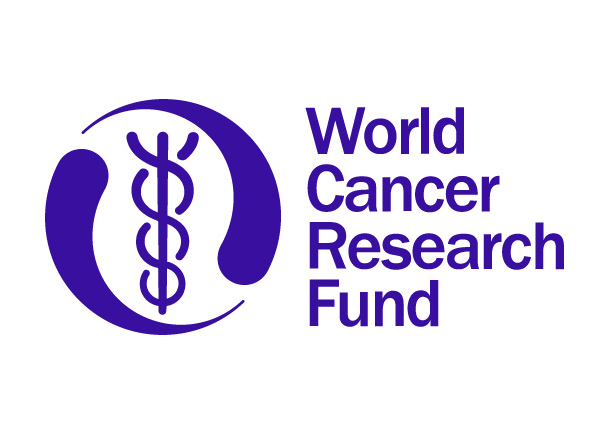Scientific abstract
Background
Oesophageal cancer (OC) is the eighth most common cancer worldwide, with an estimated 456,000 new cases in 2012 (3.2% of the total), and the sixth leading cause of cancer-related mortality, with an estimated 400,000 deaths (4.9% of the total). Survival after a diagnosis of OC remains poor, emphasising the pivotal role of primary prevention.
While alcohol and tobacco are important recognised risk factors for squamous cell OC (SCOC), the role of other potential risk factors is less clear. North-eastern Iran has long been known to have exceptionally high rates of OC (predominantly squamous cell).
However, unlike that seen in the United States and Europe, cigarette smoking and alcohol consumption are not major causes in this region. This peculiarity provides us with a unique opportunity to explore additional risk factors of SCOC.
Hypothesis and objectives
We hypothesize that characteristics of “unhealthy diet” (according to WCRF/AICR dietary score), in conjunction with chronic thermal irritation of oesophageal epithelium from hot tea (>65°C) and long-term exposure to a carcinogenic agent (opium components/products), are responsible for the very high incidence of OC in north-eastern Iran.
Settings and methods
We will conduct this project within the Golestan cohort study (GCS). The GCS has recruited 50,045 individuals, aged 40-75, from both rural (80%) and urban (20%) areas of Golestan province in north-eastern Iran. The proposed study will include 300 SCOC cases and 1,200 age-, sex- and residential place-matched controls from the GCS, using a nested case-control design.
In order to estimate the within-person variation of exposures, 150 control subjects will be selected from a sub-group of the control population who were interviewed twice. The main covariates will include: 1) a modified version of WCRF/AICR score (ranging from 0-4) from the Golestan food frequency questionnaire (FFQ); 2) health behaviours, including opium use (confirmed by urinary opium metabolites), tobacco use, and alcohol consumption; and 3) tea consumption habits including type, quantity, and temperature. For the main effect analyses, we will have sufficient statistical power (>80%) to detect moderate RRs of above 1.5.
Impact
Even outside of extremely high-risk regions like north-eastern Iran, unhealthy diet and hot drinks are suspected causes of OC. For example, multiple case-control studies in Europe have identified diets deficient in fruits and vegetables, as well as high consumption of tea, as being risk factors for OC.
However, the evidence from these retrospective case-control studies is subject to recall bias and uncontrolled confounding by tobacco smoking or alcohol drinking. Tobacco smoking and alcohol consumption are not however major causes of OC in north-eastern Iran. Furthermore, opium use is not stigmatised, and is practiced by about 20% of the adult population.
This unique prospective cohort therefore provides us with the opportunity to identify additional important risk factors of OC within this high-risk population, which will be relevant to north-eastern Iran as well as other high risk regions.
Grant publication
Meat consumption and risk of esophageal and gastric cancer in the Golestan Cohort Study, Iran International Journal of Cancer, 1 October 2022
Plain language abstract
Background
North-eastern Iran has long been known to have exceptionally high rates of squamous cell oesophageal cancer (OC). Epidemiologic studies in the 1970s showed that cigarette smoking and alcohol were not the major risk factors.
Instead it was put forward that the very high risk of OC in this area was due to exposure to opium, combined with a diet very low in fruits and fresh vegetables, and also due to thermal injury from very hot tea drinking.
Further studies were initiated to test these hypotheses although they were prematurely stopped due to the Islamic revolution in 1979.
Aims and objectives
The studies conducted in the 1970s indicate that the extremely high rates of squamous cell OC in this region are due to the individual and combined effects of poor diet, hot tea and opium use.
The overarching aim of the current proposal will be to investigate these individual and combined effects using detailed prospectively collected information from a large cohort of 50,000 Iranian individuals.
How it will be done
In 2002 an international collaborative effort was initiated between scientists at Tehran University of Medical Sciences (TUMS) (led by Professor Reza Malekzadeh) and the International Agency for Research on Cancer in order to revisit the causes of OC in the Golestan region of north-east Iran.
In order to avoid the inherent biases with retrospective studies it was decided to initiate a large-scale prospective cohort study in north-eastern Iran. The Golestan cohort study (GCS) was launched in January 2004 and successfully recruited 50,045 individuals, aged 40-75. Trained interviewers used a general questionnaire and a validated food frequency questionnaire to collect detailed data on opium use, tobacco use, tea and alcohol drinking and food intake. Samples of blood, urine, hair, and nail were also collected from each participant. Annual telephone surveys are used to obtain any disease information on the cohort participants and only 1% of the participants have been lost to follow-up.
Within the cohort of 50,000 individuals, over 250 squamous OC cases had occurred by the end of 2015, with 300 expected by mid 2017. We will compare these 300 patients with the other cohort members and will investigate the independent and combined effects of (i) nutritional deficiencies, (ii) opium use and (iii) very hot tea drinking as important causes of squamous OC in north-east Iran.
Potential impact
The Golestan cohort study of 50,000 individuals was established to answer the very question that we are posing and provides a unique opportunity to understand the reasons for the extremely high rates of OC in this region. It will also help to elucidate the aetiology of OC beyond what we know about smoking and alcohol, and will help to clarify whether poor diet and hot beverage consumption are also likely to be important risk factors. These results will therefore be of direct relevance for other populations where OC rates are increased.



